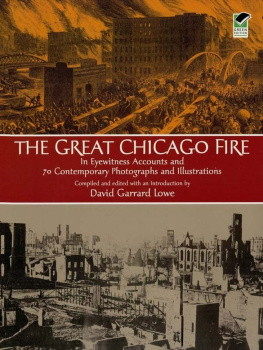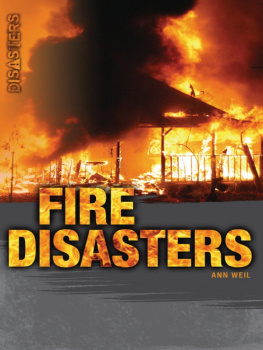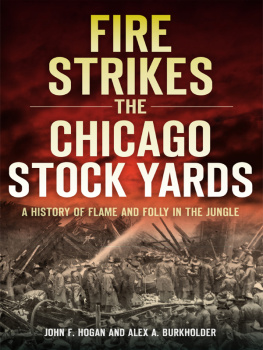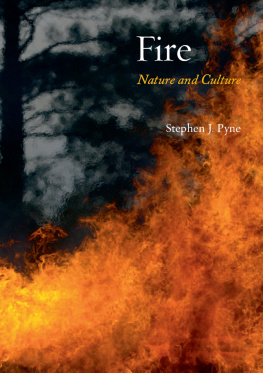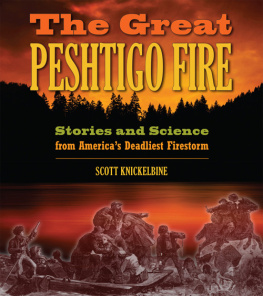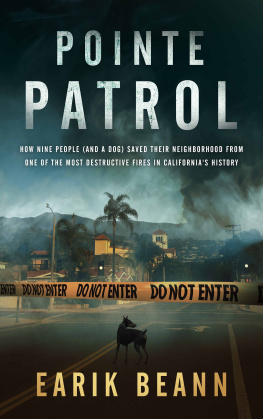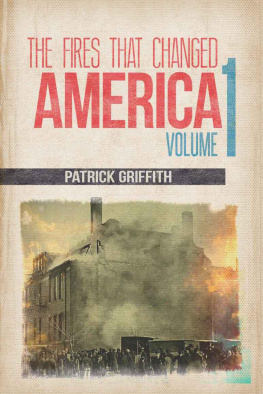
The Great Chicago Fire and the Myth of Mrs. OLearys Cow
by Richard F. Bales
FOREWORD BY THOMAS F. SCHWARTZ

McFarland & Company, Inc., Publishers
Jefferson, North Carolina, and London
LIBRARY OF CONGRESS CATALOGUING DATA ARE AVAILABLE
BRITISH LIBRARY CATALOGUING DATA ARE AVAILABLE
e-ISBN: 978-1-4766-0476-3
2002 Richard F. Bales. All rights reserved
No part of this book may be reproduced or transmitted in any form or by any means, electronic or mechanical, including photocopying or recording, or by any information storage and retrieval system, without permission in writing from the publisher.
Cover image: The Cause of the Great Chicago Fire Oct. 9 1871, Kellogg & Bulkeley Company (authors collection)
McFarland & Company, Inc., Publishers
Box 611, Jefferson, North Carolina 28640
www.mcfarlandpub.com
To Joanne;
Mike & Tom;
Phyllis, my mother;
and to Jack, naturally.
In Memoriam
Catherine OLeary
Catherine OLeary Ledwell
Eileen Knight
Acknowledgments
I could not have written this book without the enthusiastic assistance of Kenneth Grenier, retired survey officer of Chicago Title Insurance Company. Kens career at Chicago Title spanned fty-three years, and almost all of it was spent in its land records department. Ken and Chicago Title employees Jack Moore and Welton Pryor, Jr., plumbed the companys ante-re tract books and other resources to ferret out information that has never before been utilized by re historians. Simply put, this book exists because of their efforts.
But if Ken, Jack, and Welton made this book possible, then my brother Jack Bales made it as good as possible. Jack is reference librarian of Mary Washington College, Fredericksburg, Virginia. He was always willing to help and patiently answered my countless reference and editing questions and routinely mailed me (usually at his expense) research materials. Both he and my mother Phyllis Bales read and critiqued every chapter of this book and offered innumerable words of advice and encouragement.
I had always envisioned this book to be primarily an exposition of the printed word. It was not until I saw the work of artist Marshall Philyaw that I realized the importance of art and pictures in conveying the drama of the Chicago Fire. His wonderful drawings brought to life the many individuals who sought their fteen minutes of post-re fame by lying their way into the OLeary limelight.
My initial ndings concerning the res origin were published by the Illinois Historic Preservation Agency in the Spring 1997 issue of the Illinois Historical Journal. This article included a diagram by an extraordinary graphic artist, Douglas A. Swanson. This drawing, as well as several additional diagrams, proves that a picture is indeed worth a thousand words in illustrating the thoughts, theories, and conclusions presented in this book.
I owe a tremendous debt of gratitude to four individuals who believed in this project from the very beginning and supported me throughout this endeavor: Professor James E. Davis, Illinois College, Jacksonville, Illinois; Christi Parsons of the Chicago Tribune; Evelyn R. Taylor of the Illinois Historic Preservation Agency; and Thomas F. Schwartz, Illinois State Historian. Tom kindly agreed to write the foreword to this book.
In 1958 Robert Cromie wrote in his popular history The Great Chicago Fire of the tremendous help he received from the staff at the Chicago Historical Society. More than forty years later, only the names have changed. Archie Motley and Russell Lewis were unagging in their assistance and enthusiasm for this project. Keshia Whitehead generously allowed me to publish annotated portions of the transcript of the investigation into the cause of the re. These are reproduced in Appendix D. Jessica Meyer patiently (and repeatedly) searched the Societys les of prints and photographs, looking for the illustrations that appear in this book. John Alderson, Tiffany Charles, Jay Crawford, Rob Kent, and Julie Thomas helped me obtain new photographs that have never before appeared in a book about the re.
For more than six years I prowled the Research Center of the Chicago Historical Society, transcribing the minutes of the inquiry investigation, reading microlmed newspapers, and poring over numerous reference works. During this time countless staff members helped bring this book to fruition. They include John Anderson, Patrick Ashley, Olivia Chen, Linda Evans, Melissa Gasparotto, Jennifer Hartz, Michael Glass, Justin Huyck, Heather Keepes, Debbie Meiko King, Jessica Koscielniak, Darmon Lewis, Jan McNeill, Lesley Martin, Paula Murphy, Ramon Nunez, Steve Peters, Ralph Pugh, Leith Rohr, and Tim Samuelson. If I have missed any others, I am sorry.
The historical society is not the only venerable research institution in Chicago. The Newberry Library is without peer when it comes to genealogical material, and I thank its staff for helping me secure 1870 and 1880 United States census information.
The following people also contributed their knowledge, expertise, assistance, and support, and their contributions are gratefully acknowledged: Max Armstrong, Jon Austin, Carla Bailey, Robert Bales, Mary Basich, Anne Beatty, Fredda Berman, Pam Belluck, Edward M. Burke, Edward Byers, William Clark, the late Robert Collins, Lisa Compton, Nancy Knight Connolly, Denise Crosby, Anthony DeBartolo, John D. DeHaan, John Doe, Sally Dolphin, Brian Downes, Burton S. Ehrlich, John Franch, Andrea E. Friedman, Chris Froemke, Carol Gats, Brian Gray, Greg Hannon, the late Clyde Hewitt, John T. Huntington, Robert James, William Jerousek, Janet M. Johnson, Thomas J. Joyce, Jeff Karrow, Rob Karsa, Boyd Kidwell, Jean Loe, Melvin Loe, Walter S. Mitchell III, Bill Mitchinson, Manly W. Mumford, John Musial, Phyllis Newquist, Charles OConnor, Steve Olson, Ron Otto, Riva Pollard, JoAnne Prichard, Michael Raimondi, Nicholas Raimondi, Ralph Ruebner, Herman Schell, Allison Slomovitz, Melissa Smart, Carl Smith, Kelli M. Smith, Robert Steinkamp, Rebecca Swartz, Guy Trayling, Laura Tumminello, Ingolf Vogeler, Win Wehrli, and Eric Zorn.
William Tubbs of the Illinois Historic Preservation Agency provided invaluable research assistance. Mary Michals of the Illinois State Historical Library helped me obtain copies of photographs from the librarys collections.
Thanks to Dale Cohen and Sandy Spikes of the Chicago Tribune and Rick Hibbert of Oak Leaves (Oak Park, Illinois) for graciously allowing Marshall Philyaw to reproduce illustrations that originally appeared in their respective newspapers.
I thank Ken Little, co-author of History of Chicago Fire Houses of the 19th Century, whose encyclopedic knowledge of Chicago Fire Department history is matched only by his kindness in sharing it. Thanks also to David Lewis, curator of the Aurora Regional Fire Museum, Aurora, Illinois, for both his boundless enthusiasm for this project and his aid in helping me complete it.
I must acknowledge the old world craftsmanship of Donald I. Stephens and his wife Althea Sue Stephens of Assell Photo Shop, Aurora, Illinois, who were somehow able to transform worn photos, faded pictures, and even grainy microlm copies into quality photographs.
I thank Bill Radke and my co-workers at the Wheaton, Illinois, office of Chicago Title Insurance Company for their many kindnesses. They may not have always understood this obsession, but at least they tolerated it.
Next page

